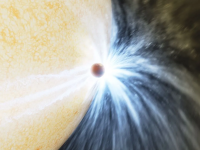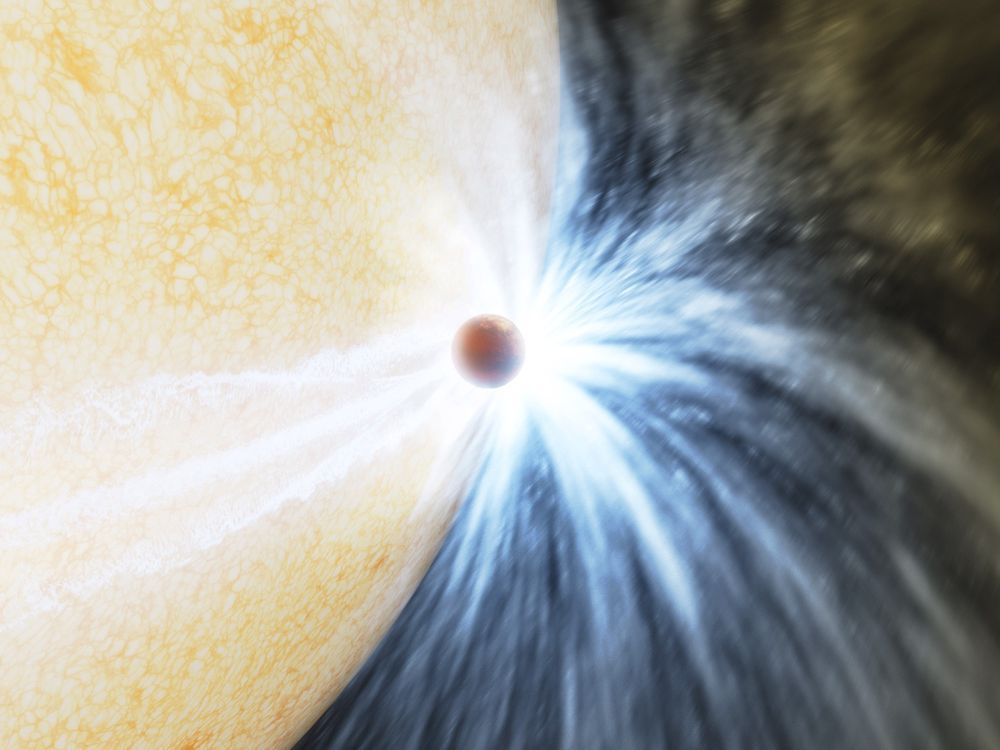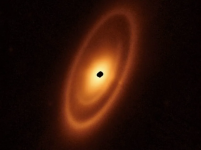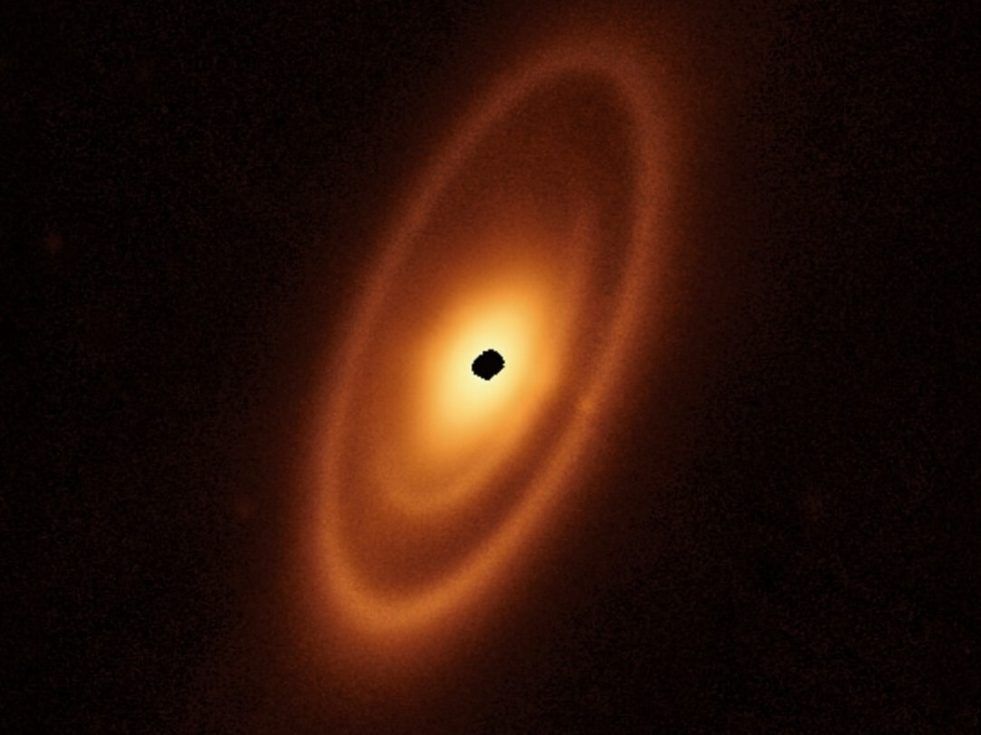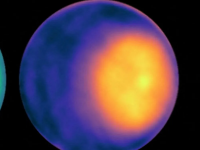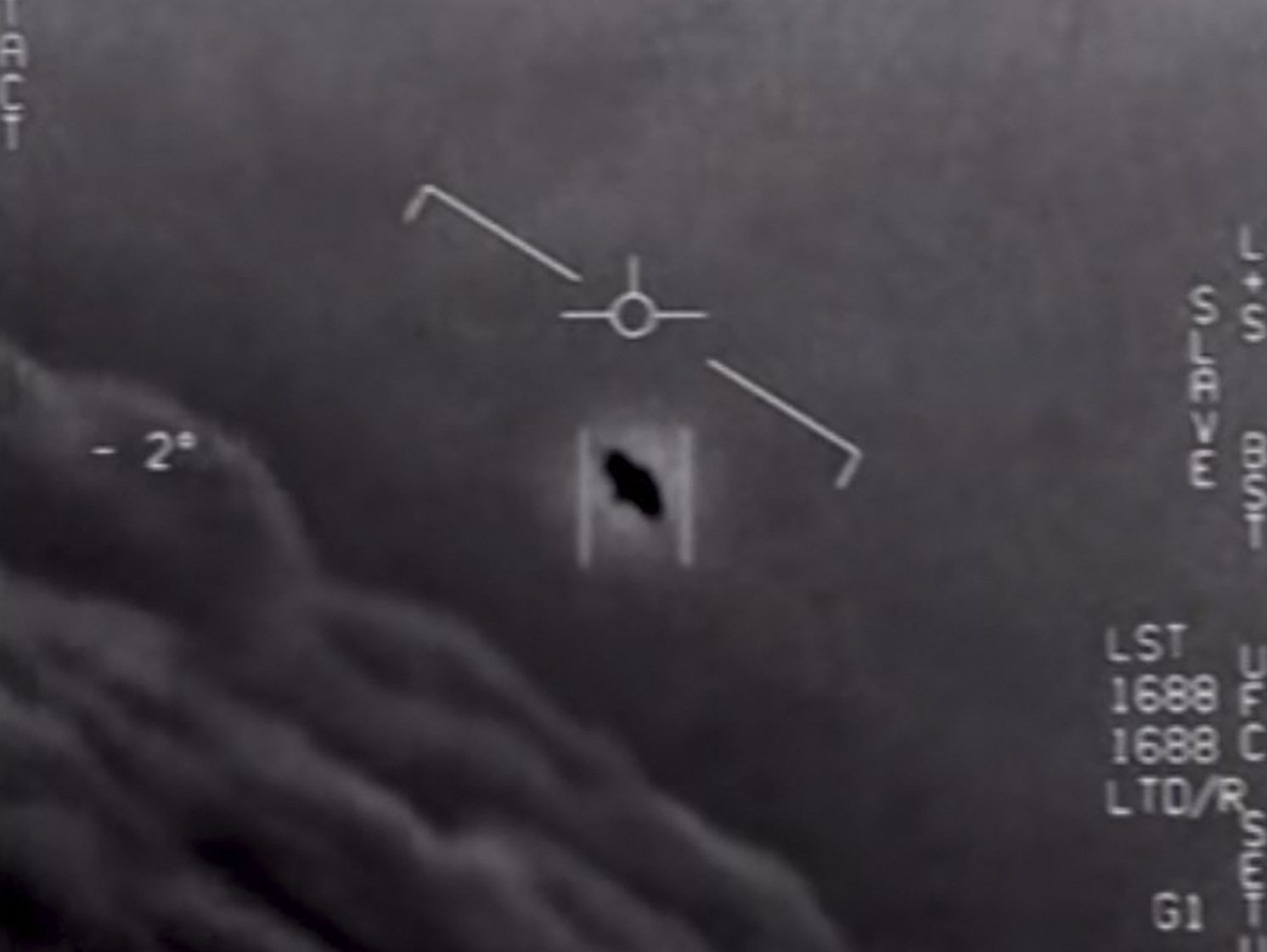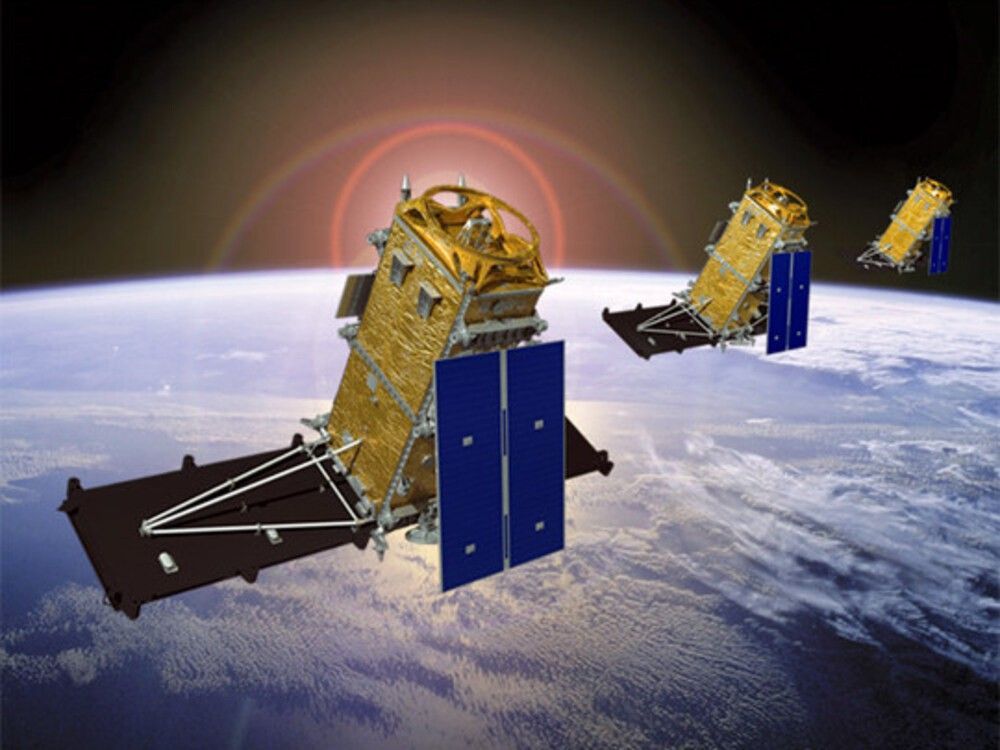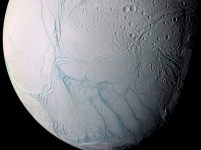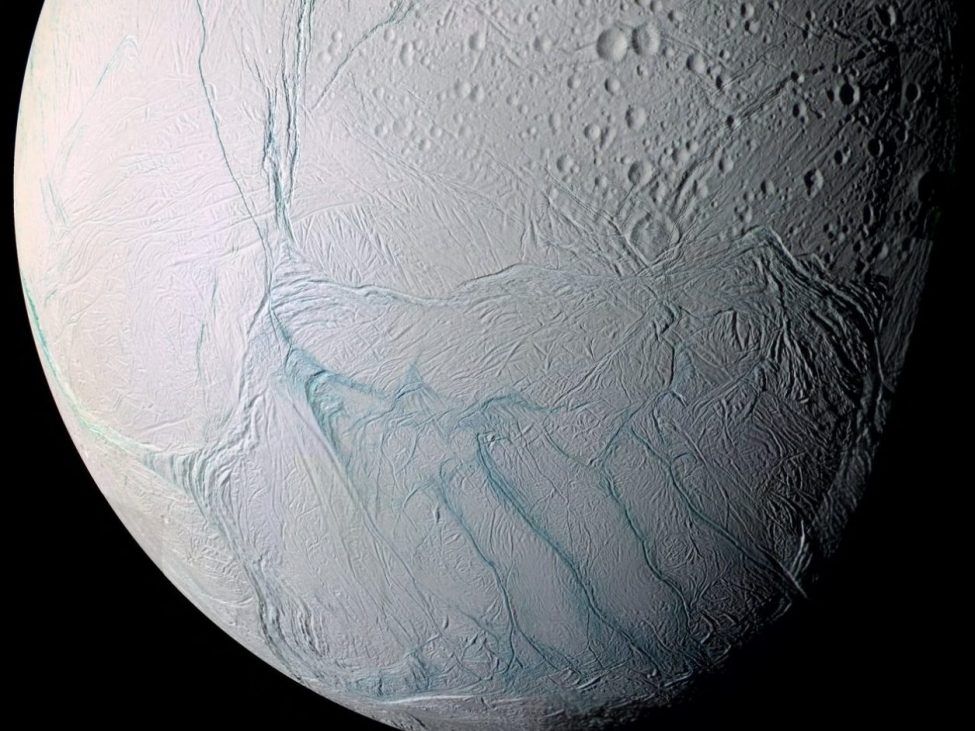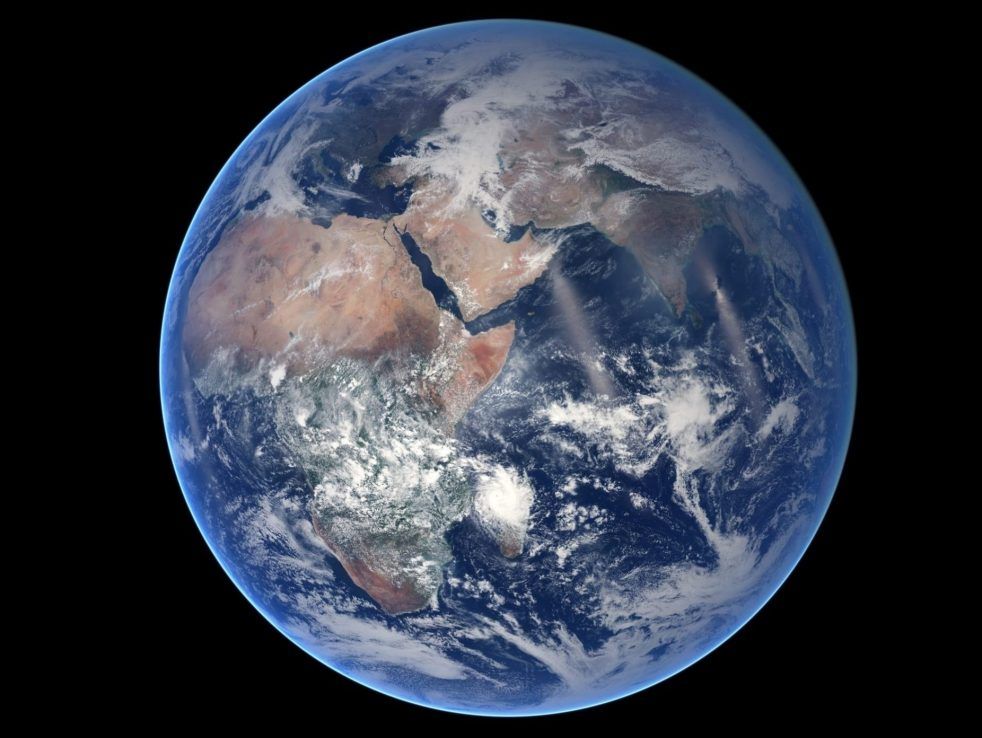UAE spacecraft takes close-up photos of Mars' little moon
Author of the article:Associated Press
Associated Press
Marcia Dunn
Published Apr 24, 2023 • 2 minute read
This image provided by the UAE Space Agency shows the planet Mars and its moon, Deimos, in the foreground. The United Arab Emirates' Amal spacecraft - Arabic for Hope - flew within 62 miles of Deimos in March 2023. (UAE Space Agency via AP)
This image provided by the UAE Space Agency shows the planet Mars and its moon, Deimos, in the foreground. The United Arab Emirates' Amal spacecraft - Arabic for Hope - flew within 62 miles of Deimos in March 2023. (UAE Space Agency via AP) THE ASSOCIATED PRESS
CAPE CANAVERAL, Fla. (AP) — A spacecraft around Mars has sent back the most detailed photos yet of the red planet’s little moon.
The United Arab Emirates’ Amal spacecraft flew within 62 miles (100 kilometers) of Deimos last month and the close-up shots were released Monday. Amal — Arabic for Hope — got a two-for-one when Mars photobombed some of the images. It was the closest a spacecraft has been to Deimos in almost a half-century.
The spacecraft also observed the little explored far side of the odd-shaped, cratered moon, just 9 miles by 7 miles by 7 miles (15 kilometers by 12 kilometers by 12 kilometers).
Mars’ other moon, Phobos, is almost double that size and better understood since it orbits much closer to Mars — just 3,700 miles (6,000 kilometers) away, the closest of any planet’s moon in our solar system.
Deimos’ orbit around Mars stretches 14,000 miles (23,000 kilometers) out. That’s close to the inner part of the spacecraft’s orbit — “which is what made observing Deimos such a compelling idea,” said the mission’s lead scientist Hessa al-Matroushi.
“Phobos has got most of the attention up until now — now it’s Deimos’ turn!” she added in an email.
Al-Matroushi and other scientists with the UAE Space Agency said these new images indicate Deimos is not an asteroid that got captured in Mars’ orbit eons ago, the leading theory until now. Instead, they say the the moon appears to be of Martian origin — perhaps from the bigger Martian moon or from Mars itself.
The findings were presented Monday at the European Geosciences Union’s general assembly in Vienna.
Amal will continue to sweep past Deimos this year, but not as closely as the March 10 encounter, according to al-Matroushi.
NASA’s Viking 2 came within 19 miles (30 kilometers) of Deimos in 1977. Since then, other spacecraft have photographed Deimos but from much farther away.
Amal rocketed to Mars on July 19, 2020, one day shy of the 50th anniversary of humanity’s first moon landing — Earth’s moon, that is — by Apollo 11’s Neil Armstrong and Buzz Aldrin.
—— The Associated Press Health and Science Department receives support from the Howard Hughes Medical Institute’s Science and Educational Media Group. The AP is solely responsible for all content.
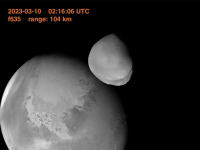
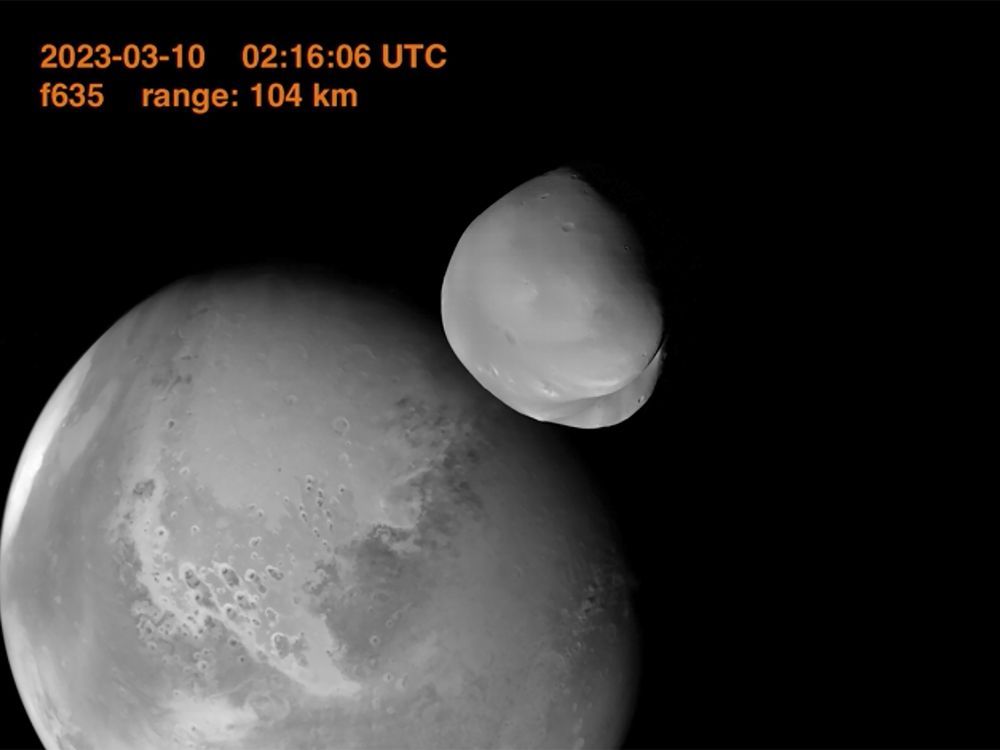
 torontosun.com
torontosun.com
Author of the article:Associated Press
Associated Press
Marcia Dunn
Published Apr 24, 2023 • 2 minute read
This image provided by the UAE Space Agency shows the planet Mars and its moon, Deimos, in the foreground. The United Arab Emirates' Amal spacecraft - Arabic for Hope - flew within 62 miles of Deimos in March 2023. (UAE Space Agency via AP)
This image provided by the UAE Space Agency shows the planet Mars and its moon, Deimos, in the foreground. The United Arab Emirates' Amal spacecraft - Arabic for Hope - flew within 62 miles of Deimos in March 2023. (UAE Space Agency via AP) THE ASSOCIATED PRESS
CAPE CANAVERAL, Fla. (AP) — A spacecraft around Mars has sent back the most detailed photos yet of the red planet’s little moon.
The United Arab Emirates’ Amal spacecraft flew within 62 miles (100 kilometers) of Deimos last month and the close-up shots were released Monday. Amal — Arabic for Hope — got a two-for-one when Mars photobombed some of the images. It was the closest a spacecraft has been to Deimos in almost a half-century.
The spacecraft also observed the little explored far side of the odd-shaped, cratered moon, just 9 miles by 7 miles by 7 miles (15 kilometers by 12 kilometers by 12 kilometers).
Mars’ other moon, Phobos, is almost double that size and better understood since it orbits much closer to Mars — just 3,700 miles (6,000 kilometers) away, the closest of any planet’s moon in our solar system.
Deimos’ orbit around Mars stretches 14,000 miles (23,000 kilometers) out. That’s close to the inner part of the spacecraft’s orbit — “which is what made observing Deimos such a compelling idea,” said the mission’s lead scientist Hessa al-Matroushi.
“Phobos has got most of the attention up until now — now it’s Deimos’ turn!” she added in an email.
Al-Matroushi and other scientists with the UAE Space Agency said these new images indicate Deimos is not an asteroid that got captured in Mars’ orbit eons ago, the leading theory until now. Instead, they say the the moon appears to be of Martian origin — perhaps from the bigger Martian moon or from Mars itself.
The findings were presented Monday at the European Geosciences Union’s general assembly in Vienna.
Amal will continue to sweep past Deimos this year, but not as closely as the March 10 encounter, according to al-Matroushi.
NASA’s Viking 2 came within 19 miles (30 kilometers) of Deimos in 1977. Since then, other spacecraft have photographed Deimos but from much farther away.
Amal rocketed to Mars on July 19, 2020, one day shy of the 50th anniversary of humanity’s first moon landing — Earth’s moon, that is — by Apollo 11’s Neil Armstrong and Buzz Aldrin.
—— The Associated Press Health and Science Department receives support from the Howard Hughes Medical Institute’s Science and Educational Media Group. The AP is solely responsible for all content.


UAE spacecraft takes close-up photos of Mars' little moon
A spacecraft around Mars has sent back the most detailed photos yet of the red planet's little moon.
